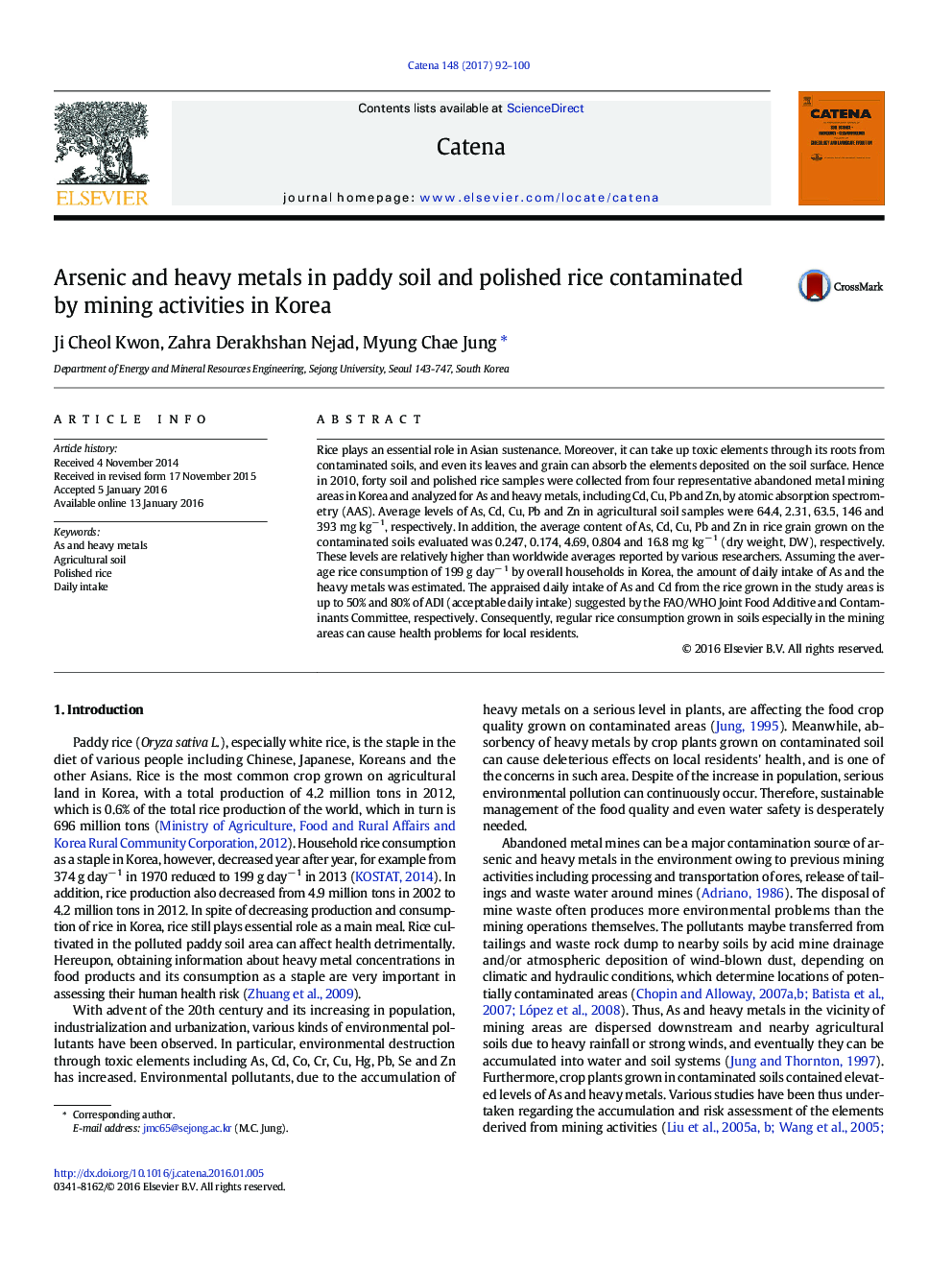| Article ID | Journal | Published Year | Pages | File Type |
|---|---|---|---|---|
| 4570818 | CATENA | 2017 | 9 Pages |
•Environmental impact on As and heavy metals in soils from mining sites•Analyzing As and heavy metals in paddy soils and polished rice•Compiling As and heavy metals in soils and rice grain from various countries•Calculating daily intake of As and metals by rice consumption
Rice plays an essential role in Asian sustenance. Moreover, it can take up toxic elements through its roots from contaminated soils, and even its leaves and grain can absorb the elements deposited on the soil surface. Hence in 2010, forty soil and polished rice samples were collected from four representative abandoned metal mining areas in Korea and analyzed for As and heavy metals, including Cd, Cu, Pb and Zn, by atomic absorption spectrometry (AAS). Average levels of As, Cd, Cu, Pb and Zn in agricultural soil samples were 64.4, 2.31, 63.5, 146 and 393 mg kg− 1, respectively. In addition, the average content of As, Cd, Cu, Pb and Zn in rice grain grown on the contaminated soils evaluated was 0.247, 0.174, 4.69, 0.804 and 16.8 mg kg− 1 (dry weight, DW), respectively. These levels are relatively higher than worldwide averages reported by various researchers. Assuming the average rice consumption of 199 g day− 1 by overall households in Korea, the amount of daily intake of As and the heavy metals was estimated. The appraised daily intake of As and Cd from the rice grown in the study areas is up to 50% and 80% of ADI (acceptable daily intake) suggested by the FAO/WHO Joint Food Additive and Contaminants Committee, respectively. Consequently, regular rice consumption grown in soils especially in the mining areas can cause health problems for local residents.
